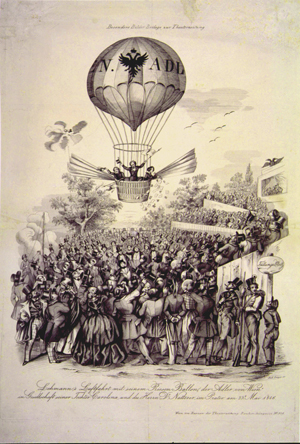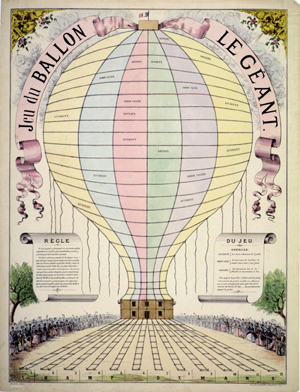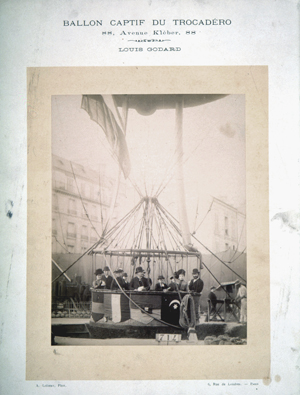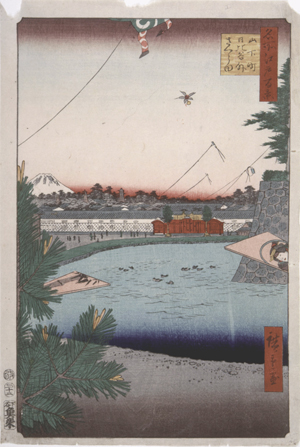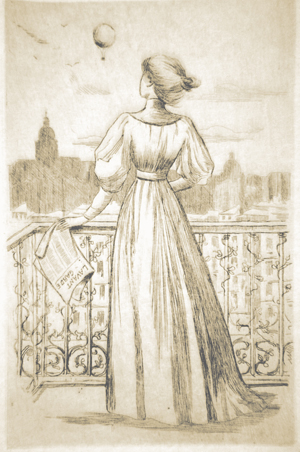Dated 1889, this photograph shows the large captive balloon managed by Louis Godard, nephew of the famous Eugène Godard, a pioneer in the genre of the large balloon. Both were balloon builders, and the family included numerous balloonists, led by Eugène; Pierre, father of Eugène, and Eugène's brothers and sisters—Louis (son of Louis who managed the pictured balloon); August, Jules, and Eugénie. In fact the Godard name became so closely associated with the balloon that in 1960 historian Charles Dollfus claimed he could still find people in the French countryside who referred to any spherical balloon as a "godard." This view was no doubt taken during the Paris Exposition of 1889, which was visited by 32 million people, and during which the Eiffel Tower opened. Liébert, known for applying electric lighting to indoor photography, ran a concession at the Exposition to photograph balloon passengers. In the photograph, ten people fill the basket, which is draped by flags, including, curiously, that of Turkey, which was officially absent from the Exposition. Seen on the right, attached to the basket, is a heavy dragline and anchor, so the balloon is prepared for free flight should it sever its tether. In the background at lower left a wheeled hydrogen generator can be seen. This photograph evokes the famous grands ballons captifs of Henri Giffard, the last of which rose above Paris for the Exposition of 1878 and could carry fifty people; Giffard built his first great tethered balloon for the Exposition of 1867.

